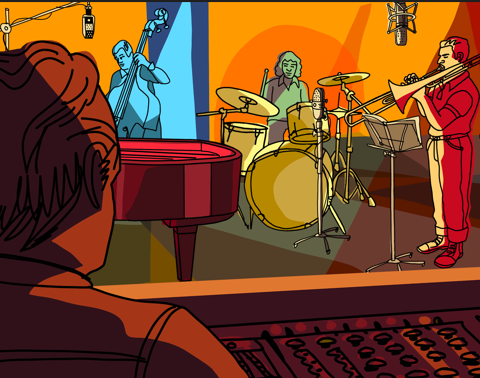“I never dreamt that with my own two hands I could touch the sky,” says pianist and teacher Seymour Bernstein in Seymour: An Introduction. Seymour is actor/filmmaker Ethan Hawke’s lovely tribute to a man who decided to forgo a career as a concert pianist and instead share his passion for music by educating and inspiring new artists. This intimate portrait is a beautiful and touching essay on life and art.
Seymour tickles the ivories as Hawke uses the subject’s own tender piano playing as the score for the film. Classical tunes fade in and out of the soundtrack as Hawke interviews Seymour and several of his students, both past and present. The film delicately folds Seymour’s own skill and artistry with the philosophy and wisdom he shares with his students. The film features a few direct addresses from Bernstein as he answers questions from Hawke and ruminates on his craft with sincerity and insight. These lovingly lit scenes, bathed in radiant soft light by DP Ramsey Fendall, make Seymour an irresistibly likable teacher whose words flow as poetically as the piano tunes that waft throughout the film. Seymour: An Introduction is a master class in understated filmmaking as Hawke’s deceptively simple structure offers an appropriate frame for its modest maestro.
The film situates Seymour within the careers of contemporaries such as Glenn Gould, through the use of archival footage coupled with Seymour’s own memories as he explains the delicacy of his approach to music in contrast to other professionals. Seymour therefore shows art as the extension of its creator as the piano teacher’s reflections and rehearsals illustrate the range of personal accents artists can stamp on their work to brand it with their own feelings and experiences.
Hawke appears on camera only briefly as he presents Seymour to an audience of peers in his theatre group. The star thespian and neophyte director shares his memory of Seymour providing inspiration for his own career path as an actor, allowing himself to reflect upon the kind of art that provides value and meaning for both its creator and its consumer. This significant and quite personal sequence appears dispersed throughout the film to show the growth of the two artists in their own mediums. By doing so, the film successfully inserts its celebrity filmmaker into the story without overwhelming its subject, and builds an effective and relatable thread to make this immensely personal film candidly accessible. The thread builds to Seymour’s first public performance in decades and the awe with which the audience watches his performance is the perfect crescendo a film could offer.











